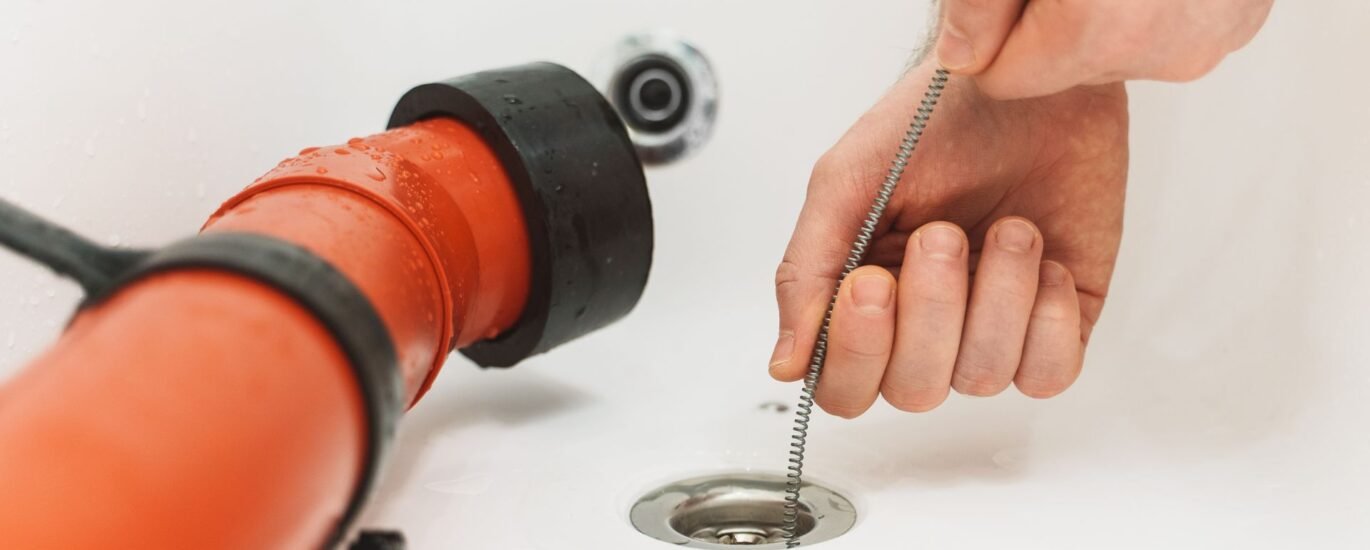Everyone loves a good do-it-yourself fix. A plunger here, some chemical cleaner there—but there are times DIY just can’t fully solve the problem. Recognizing when to call in professionals for drain cleaning can save you damage, costs, and frustration. In this post, we’ll dig into situations where professional help becomes necessary—and how their methods differ from DIY.
Common DIY Methods & Why They Appeal
DIY often means:
- Using a plunger to try to dislodge clogs
- Drain snakes (manual, smaller versions) to try to pull or break obstructions
- Chemical cleaners or “home remedies” (vinegar, baking soda, boiling water)
- Enzymatic cleaners
These methods are appealing because they’re:
- Readily available
- Relatively inexpensive
- Convenient—you can try them immediately
The Limitations of DIY Drain Cleaning
Even though these methods work sometimes, they often fall short when:
- The clog is deep inside, beyond what a short snake or plunger can reach.
- You have tree root intrusion in sewer or main lines.
- Mineral buildup or grease scale has hardened over time.
- Multiple drains or fixtures are affected, suggesting a main line issue.
- There are structural problems in the pipe (cracks, corrosion, loose joints).
Other risks:
- Damage to older pipes from harsh chemical cleaners.
- Partial removal: leaving parts of the clog or buildup behind, which regrow.
- Health hazards—using chemicals improperly can hurt people or pets.
What Professionals Bring to the Table
Here’s how expert drain cleaning services differ:
Experienced Diagnosis
- Technicians will ask detailed questions about symptoms (how long problem’s been around, which fixtures are affected).
- Use of camera inspections to see inside pipes. No guesswork.
Tools & Techniques Beyond DIY
- Hydro-jetting: powerful, high-pressure water to blast through grease, mineral scale, roots.
- Commercial snaking / augering: more powerful and more reach than homeowner tools.
- Proper disposal & safe methods: ensures chemicals are handled safely; debris removed properly.
Tailored Solutions
Each problem is unique. Professionals adjust their methods based on:
- Type of clog (grease, roots, scale, foreign objects)
- Location (kitchen sink vs. main sewer line)
- Pipe condition (age, material, access)
Examples of Scenarios When Pro Service Is the Best Option
Here are some real-life situations where calling in experts is wise:
- Persistent slow drain even after plunging, scrubbing, and cleaning filters/screens.
- Gurgling or bubbling in multiple fixtures – signs the issue is deeper than a localized clog.
- Water backup draining from one fixture into another (e.g. toilet flush causing sink overflow).
- Tree root infiltration in sewer main – can cause recurring backing up; requires hydro-jetting or root removal.
- Strange smells that linger after cleaning (often decay inside pipe or trapped debris).
The Steps Professionals Take in Drain Cleaning
Here is a breakdown of what a professional drain cleaning service will commonly do:
- Initial Assessment: listening to homeowner or business owner, checking affected fixtures.
- Camera Inspection: send a waterproof camera in to locate blockages or damage.
- Technique Selection: choosing between snaking, hydro-jetting, localized cleaning, etc.
- Full Clean-out: remove all blockages, clean pipe walls, remove scale or roots.
- Testing & Verification: run water, possibly recur after a short period to confirm full flow.
- Advice for Follow-Up & Maintenance: suggestions to maintain drainage health.
Risks of Delaying Professional Drain Service
Delaying action can lead to:
- Worse clogs, which are harder and more costly to remove
- Pipe damage (erosion, cracks, leaks) if blockages put pressure on weak spots
- Water damage to surrounding structures, mold growth
- Increased repair bills, maybe whole pipe section replacement
- Health risks from mildew, pests, stagnant water
How to Choose the Right Drain Cleaning Partner
When you decide to hire a pro, these factors help you get good value and results:
- Look for technicians who use camera inspections so you get accurate diagnosis.
- Ask whether they offer hydro-jetting (useful for tough clogs, grease, roots).
- Check what kinds of drains they service (kitchens, bathrooms, main sewer lines, commercial spaces).
- Request info about their methods—how they clean, tools used, cleanup procedures.
To see exactly what services are offered for drain issues, read more on our Drain Cleaning page.
Getting Started: When You Should Reach Out
If any of these happen, professional intervention can help:
- Slow draining that doesn’t improve
- Multiple fixtures are affected
- Foul odor persists
- Water backup or overflow
- Evidence of pipe issues (sagging, roots, leaks)
For more detailed help or to arrange a service, use our Contact Us page.
Conclusion
DIY solutions are valuable tools, but they’re not always enough. Knowing when a problem is beyond home fixes is key to avoiding larger disruption. The right professional tools, expertise, and techniques make drain cleaning more effective and long-lasting. If you’re experiencing recurring or serious drain issues, check out our Drain Cleaning offerings and contact us via Contact Us to get help.

